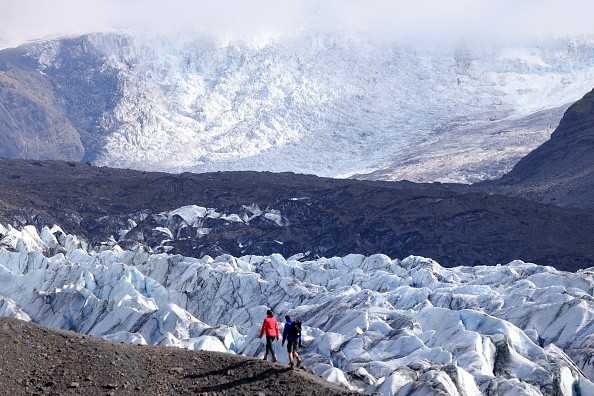Recently, scientists discovered close to 15,000-year-old viruses in the melting glaciers of Tibet, China that humans aren't aware of before now. Most of these viruses remained alive since they had stayed frozen in ice.

The 15,000-year-old viruses
The study may assist in getting knowledge about how viruses have developed over centuries and also find new types of viruses. The team from Ohio State University conducted the study's findings and it has been released in the journal Microbiome.
The team studied two dissimilar ice samples from the Guliya ice cap of the Tibetan Plateau located in China - about 22,000 feet above sea level.
Each ice sample consists of layers that tell stories of previous climate activities and environments. Various substances were stuck in the ice slabs during the time they were formed. It is possible that these 15,000-years-old viruses in melting glaciers originated with plants and soil.
As per the study, they are not animal or human-based and are capable of adapting to extreme conditions. The researchers examined the ice and found the genetic codes for 33 viruses.
Naming a New Virus
The scientific community has already identified four of those viruses, but not less than 28 of them were not known to science before now. Actually, the four identified viruses in the Guliya ice cap are among virus families that normally infect bacteria.
The team discovered the concentrations of the viruses (15,000-years-old) in melting glaciers far below their average levels when identified in other environmental regions such as soil or ocean.
Viruses do not have the same universal gene, so researchers haven't actually been able to give them a name yet because naming a new virus and trying to figure out the category it belongs to in the landscape of already known viruses has to do with a lot of steps.

Climate Change
To compare the previously unrecorded virus with the known ones, researchers made a comparison of gene sets that are classified in scientific databases for viruses that were previously discovered. The four discovered viruses that give the impression of being similar, are truly among the virus families that normally infect bacteria.
Experts have highlighted the threat of viruses coming out of melted glaciers a long time ago. Scientists have made it known that climate change is thawing the permafrost soils that have stayed frozen for thousands of years.
As they melt, ancient viruses and bacteria get freed as well, and these viruses bounce back to life just like the finding of viruses (15,000-years-old) in melting glaciers demonstrates.
Additionally, melting ice exposes lots of reserves of secluded greenhouse gases such as methane and carbon dioxide, that boost global warming - the main reason for the melting of the ice in the first place.
Related Article : Deadly Virus Detected in Hawaiian Dolphin May Trigger Global Outbreak Amongst Marine Animals
For more news, updates about viruses and similar topics don't forget to follow Nature World News!
© 2026 NatureWorldNews.com All rights reserved. Do not reproduce without permission.





